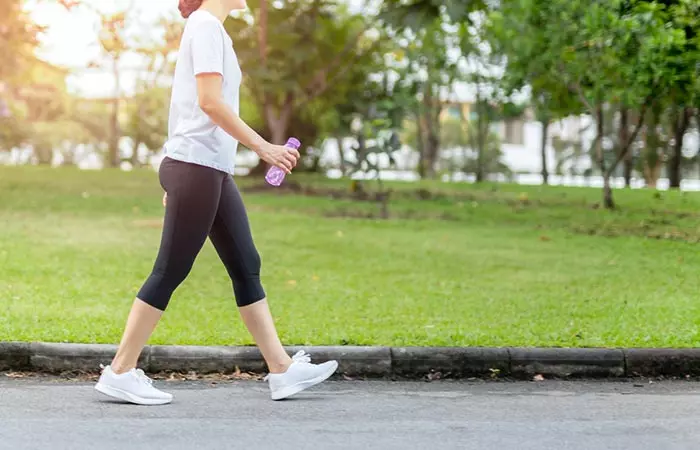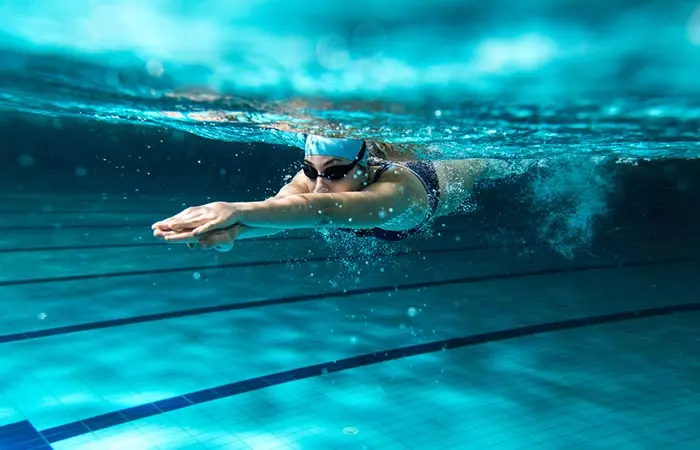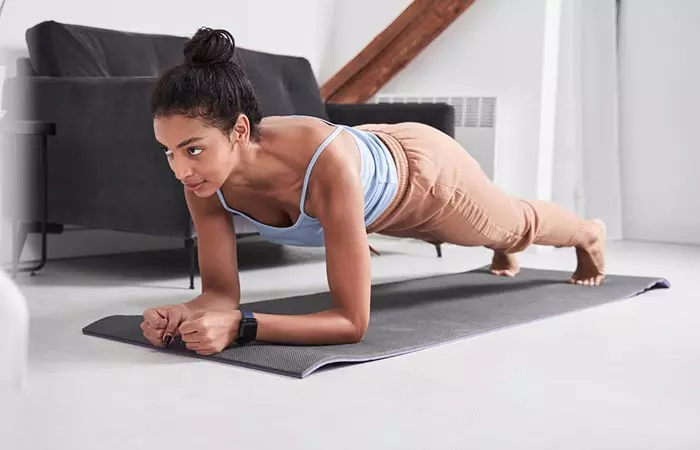If you have hypertension, do these 7 blood pressure-lowering exercises and 6 yoga asanas. It is essential to consult with your doctor before starting any new exercise programs. This article also tells you how frequently you should do the exercises and which exercises to avoid. Read on!
7 Best Exercises To Lower Blood Pressure
- Walking Walking is a low-impact cardio exercise that helps release serotonin, a ‘feel-good’ hormone. Scientists have found that walking 10,000 steps a day, irrespective of the intensity, could help reduce high blood pressure and improve exercising capacity (3). A 2022 study assessed randomized controlled trials with 5,763 participants to highlight the merits of walking for hypertension. The participants walked an average of 153 minutes over the course of 15 weeks. This resulted in a decrease of 4.11 mmHg in systolic blood pressure, 1.79 mmHg in diastolic blood pressure, and it also reduced the resting heart rate by 2.76 bpm. It is one of the simplest but best exercises for heart health and may even reduce the chances of a stroke. Find a park or a stretch of road that has less traffic and more greenery. You can walk in the mornings or evenings, focus on breathing, and enjoy nature to lower your stress levels. Take a warm bath afterward, have a cup of tea, and you will feel more relaxed.
- Jogging Put those running shoes on, leave your problems at the door, and start jogging! You can start with brisk walking and gradually increase your pace to do slow jogging or moderate-paced running. A trial found that running regularly at a moderate pace could help lower blood pressure levels in people with hypertension (4). You can jog on the treadmill or outdoors. Do cool-down stretches after you are done, and take a nice warm shower later. Dmitri Konash, a blogger, shares his experience of how he brought his hypertension back to optimal levels with exercise. He started jogging to lower his blood pressure and improve his cardiac health, stating, “In less than 12 months after being diagnosed with hypertension my blood pressure returned to normal levels (i).”
- Dancing Dance therapy may have a positive effect in reducing hypertension (5). This aerobic exercise improves blood circulation, helps in stress reduction, and improves balance and coordination. Start with low-intensity dance forms and join a group that has a dedicated class for people with hypertension. You may try other high-intensity dance forms after consulting your doctor.
- Cycling Bicycling outdoors or indoors is a great aerobic exercise to reduce weight, tone the lower body, and lower high blood pressure levels. A study conducted on people with type 2 diabetes showed a significant reduction in blood pressure levels in people who regularly cycled (6). Choose a bicycling lane or do indoor cycling to prevent falls and sudden jerks. Focus on your breathing, take water breaks, and wear bicycle shorts to prevent chafing.
- Swimming If you love water, swimming is another aerobic exercise you can enjoy to reduce hypertension. A 10-week study showed swimming to be an effective exercise to reduce resting blood pressure (7). Always warm up before getting into the pool and wear a swimming cap and goggles. It is best to start with an instructor to help guide you through a few water exercises to improve your strength and mobility before getting into full-blown laps.
- Dynamic Resistance Training Dynamic resistance training involves movement. Exercises like weighted bicep curls, push-ups, bench press, etc., are dynamic resistance exercises that help burn calories, improve muscle tone, and lower blood pressure levels. Use weights that are around 30-40% of your body weight. Ask your trainer to help if you are a beginner. Do dynamic resistance exercises 2-3 days a week, and do not lift heavy weights too soon. Avoid lifting weights if you have chronic heart issues and consult a doctor beforehand (2).
- Isometric Resistance Training Isometric resistance exercises do not involve movements or motions like dynamic resistance exercises. Such exercises engage the muscles and work on them without any visible body movement. For example, holding a plank is an isometric exercise. You can check out more examples of isometric exercises here. Scientists have found isometric handgrip exercises to be more effective in lowering blood pressure than dynamic resistance training (8). However, there is insufficient evidence regarding its safety and efficacy (2). Note: Always warm up for 10 minutes before exercising or doing yoga asanas. Exercise duration and pace have a crucial impact on your blood pressure levels. Scroll down to understand how often you can do all the exercises mentioned above.
How Often To Do Them
Start by working out 3-5 days a week with a balanced mix of cardio and strength training exercises. If you work out three days a week, do cardio for two days and a day of strength training. If you work out five days a week, balance them with three days of cardio and two days of strength training. Change your workout routine depending on your progress. Talk to your trainer to design a workout routine that works for you. People with hypertension generally have other comorbidities like obesity and heart diseases. Certain exercises can aggravate the conditions. Scroll down to know which exercises to avoid.
Which Exercises To Avoid
HIIT (High-Intensity Interval Training) Sprinting Heavy weightlifting
Stick to low or moderate-intensity aerobic or strength training exercises (with light weights) to prevent further health complications.
6 Yoga Asanas For High Blood Pressure (Video)
Learn how to lower your blood pressure with simple exercises! Watch this video that shows exercises to reduce your blood pressure and improve your health. Do these yoga asanas 3-4 days a week under the supervision of an instructor. Apart from the asanas, you can do the following exercises regularly to manage high blood pressure levels. Also, follow a healthy lifestyle to reduce stress and manage hypertension. Here are a few tips.
Other Tips
Reduce your salt intake. Follow the DASH diet. Reduce alcohol consumption. Take part in group activities. Learn a new skill. Take a vacation every six months. Avoid procrastinating. Talk to a specialist if you have anxiety. Avoid toxic situations – professional or personal. Practice deep breathing exercises.
How long does it take to lower blood pressure with exercise? According to anecdotal evidence, it takes about 1-3 months to see visible results of the impact of exercise on blood pressure. Can drinking lots of water lower blood pressure? Maybe. However, make sure you check the sodium content and avoid bottled water with high sodium content. Can lack of sleep cause high blood pressure? Yes. Chronic sleep deprivation along with insomnia, especially in the middle age, may increase the risk of hypertension (9).











